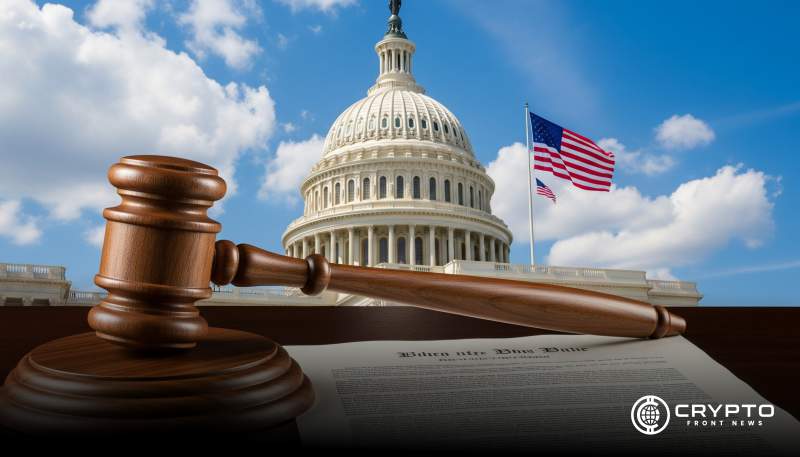- Lawmakers asked SEC Chair Paul Atkins to align regulations with Trump’s order expanding crypto access in 401(k) retirement plans.
- Analysts estimate a 1% crypto allocation in 401(k)s could generate $93B inflows, surpassing Bitcoin ETF totals since 2024.
- Pension funds remain split, with Michigan expanding Bitcoin and Ethereum holdings while Wisconsin exited its crypto ETF positions.
Nine U.S. lawmakers have urged the Securities and Exchange Commission (SEC) to act swiftly on President Donald Trump’s executive order expanding access to cryptocurrency within retirement savings plans.
The request, made in a letter dated September 22, 2025, follows the president’s August directive instructing regulators to make alternative assets such as crypto, real estate, and private investments more accessible in 401(k) schemes.
Lawmakers argued that current accredited investor and qualified purchaser standards limit investment opportunities, leaving millions of Americans unable to diversify their retirement portfolios.
Letter Seeks SEC Role in Revising Rules
The letter, addressed to SEC Chair Paul Atkins, asked the agency to assist the Department of Labor in revising guidance that restricts alternative assets in retirement plans. House Financial Services Committee Chairman French Hill and Capital Markets Subcommittee Chair Ann Wagner led the effort, joined by seven Republican colleagues.
They emphasized that the SEC’s cooperation was essential for ensuring that retirement plan fiduciaries could expand choices without regulatory conflict. The lawmakers also stressed that the changes should directly align with Trump’s executive order on “Democratizing Access to Alternative Assets for 401(k) Investors.”
401(k) Market
According to analysts, opening the $9.3 trillion 401(k) market to crypto could lead to notable inflows. A 1% allocation into crypto based products alone could drive $93 billion in new capital. That figure would surpass the $60.6 billion attracted by spot Bitcoin ETFs since their January 2024 launch.
Lawmakers noted that roughly 90 million Americans participate in 401(k) programs, and broader asset access could help them achieve stronger, risk adjusted returns over time. Their appeal followed the Department of Labor’s May reversal of earlier anti crypto guidance, which had advised extreme caution for fiduciaries considering digital assets.
Pension Funds Show Mixed Approach
Several state pension systems have already taken steps toward digital asset exposure, indicating the policy’s potential impact. The Michigan Retirement System added $10.7 million worth of the ARK 21Shares Bitcoin ETF during the second quarter and held 460,000 shares of Grayscale Ethereum Trust valued near $15.6 million.
However, Wisconsin’s pension board moved in the opposite direction, selling its holdings in BlackRock’s iShares Bitcoin Trust ETF earlier this year. These contrasting moves show how institutions are divided on the role of crypto in long term retirement strategies, even as lawmakers push regulators to broaden investor access.






